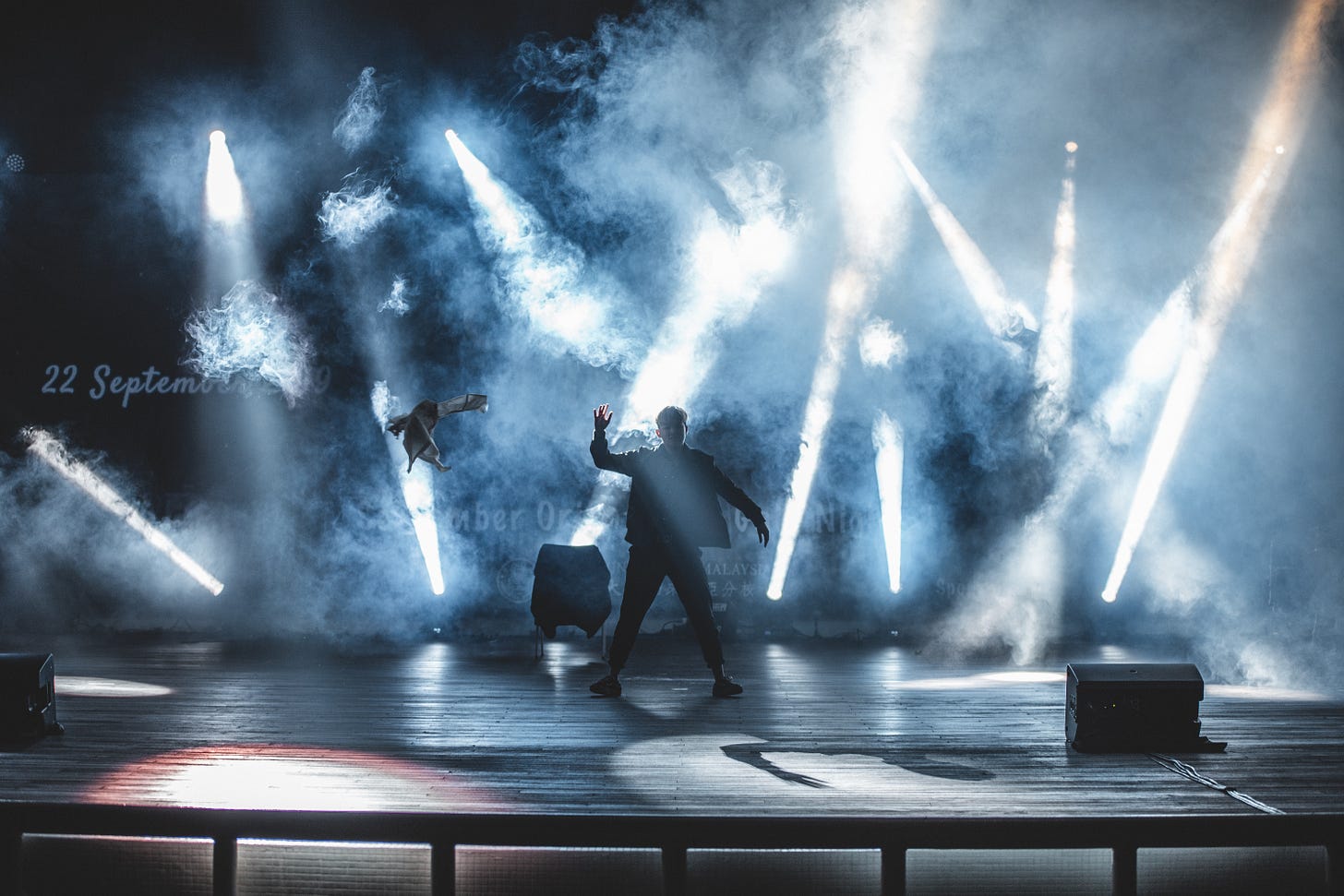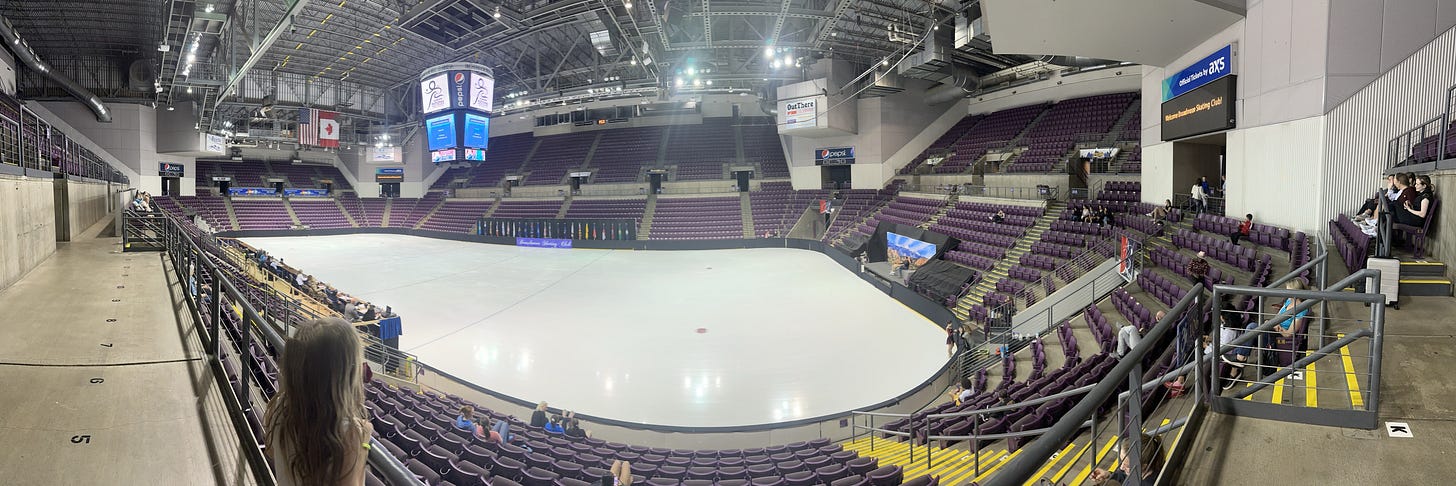What does it mean to report on a figure skating event in a time when spectators are already doing the reporting themselves on social media? Naturally, I turned to scholarship to start thinking through this question.
Lately I have been reading Performance Studies scholar Peggy Phelan’s 1993 book Unmarked: The Politics of Performance for my other life as a theatre historian, which centers on visibility politics, liveness and contemporary culture, using as its subject a variety of performance texts, including photographs, paintings, film and theatre.
In the book, Phelan addresses how performance is inherently temporal: it exists only within its particular moment of utterance, at the time it occurs. A performance ‘can be performed again, but this repetition itself mark it as “different”’ (146).
This difference, she argues, is particularly marked by writing. As she goes on to explore, writing about performance—trying to capture and reproduce performance—is only ever an act of ‘[helping] us to restage and restate the effort to remember what is lost’ (147). After all, ‘[the] disappearance of the object is fundamental to performance’ (147). In other words, everything vanishes.
What she claims, as I addressed in my aforementioned previous Substack newsletter, is that the performance only ever occurs in the present, and is inherently uncapturable.
Which is why Phelan also calls for performance critics to ‘realize that the labor to write about performance (and thus to “preserve” it) is also a labor that fundamentally alters the event’ (148). Writing about performance, she argues, is an ‘act of writing toward disappearance’ rather than ‘toward preservation’ (148).
But what does it look like to ‘write towards disappearance’? Doesn’t writing something give prior events a sense of permanence through the tangibility of pen to paper?
These claims are, of course, complicated by social media. Scholars responding to Phelan have later written against her claims, arguing that the concept of ‘liveness’ is only made visible through the practice of technical reproduction. Sure, the camera made ‘live or not live’ comprehensible, and it will never disappear, and it is especially crucial (for now at least) to the vitality of figure skating performance. (As we’ve seen, people rarely attend in-person competition events anymore.)
On the heels of one such poorly-attended event—the Broadmoor Open, in Colorado Springs, CO last week—Phelan has got me thinking about how writing about figure skating (on social media, in newspapers and journals) neither seeks to ‘restage’ nor to ‘restate’. As I watch news of skaters’ program music for the 2023-24 season trickle out on social media, and as I wait in anticipation for the first few international competitions to begin in the fall, I am wondering what brand of coverage we will get of upcoming events this season. I am anticipating what we have always gotten: news, but not reviews.
Coverage of figure skating competitions, particularly at the national and international level, often tally medals. Less often do these reviews—so popular to the performing arts (theatre, dance, music)—actually discuss, well, skaters’ performances. If there are mentions of performance qualities, they often still try to quantify programs with the number of jumps landed, or points awarded by judges, or years on the international circuit.
What sticks with me about Phelan’s words is that writing about figure skating specifically, even in this age of reproduction, is indeed a step towards disappearance given how brief the actual performative moment lasts. Peacock takes down its coverage of events within 48 hours. Sometimes spectators’ phones capture snippets of programs, and then (sometimes almost instantaneously) land onto social media or get circulated privately amongst friends. (If you were following my Instagram last week, you saw my own videos of the Senior Women’s events at Broadmoor.)
But these videos are fragmentary, and not representative of the performative moment in full. They exclude so many elements at play in figure skating performance: the sound of the ice; the quality of lighting; the presence of a live audience; the simultaneous viewership of the skater’s body and the skater’s body on the Jumbotron; the moments before and after a skater’s program.
Despite their attempt to make permanent the performative moment, they leave gaps. And, well, they do kind of make these programs disappear. And so even writing about figure skating performances highlight this disappearance, reminding us that what has come to pass has vanished.
Given how long arts journalists have been reviewing theatre performances, for instance, there is a tradition for how to write about performance for the public. Perhaps most notably, arts critic Ben Brantley, who retired in 2020, wrote theatre reviews for the New York Times which eloquently summarize plot while weaving in production details on everything from the actors to design elements to ideas explored in the performances.
One review of a recent UK production of Romeo and Juliet, directed by Rebecca Frecknall at the Almeida Theatre in London and starring Toheeb Jimoh, who plays Sam Obisaniya in Apple TV+’s “Ted Lasso”, addresses several elements of the production in just a paragraph:
‘Her “Romeo and Juliet,” performed without an intermission, begins with the cast clawing feverishly at a stage wall, onto which are projected crucial lines from the prologue. But as if in haste to get straight to the meat of the play, the wall soon collapses to reveal the citizenry of Verona mid-combat. Danger, you feel from the start, is the default mode of a contemporary-seeming milieu amid which Juliet is described by her father as “a stranger in the world.” That is perhaps because she hasn’t yet experienced life’s abrasions; such an awareness will come—and how—with time.’1
The review could center on Jimoh’s success and popularity since the hit television show—but it doesn’t. In the four sentences above, we instead get so much information about the show specifically: information useful to future spectators who might want to see the performance (that there is no intermission, so visit the toilets before the show); the mood of the show’s opening; actor movement and action; a sense of the play’s thematic progression; and a quotation from the play. It reminds us of the temporality of the performance—it makes the event disappear—but it also looks forward to future (albeit different) performances. And this is just one early paragraph; the entire review reads so smoothly.
This is not the case for sports journalists. Such writers generally think in numbers, in statistics, in the personal lives of the athletes. But rarely do they talk about the qualities of performance, even though a hockey player’s goal and figure skater’s triple axel are the stuff of performance.
Certainly Christine Brennan, an award-winning national sports columnist for USA Today, is noteworthy for having covered a variety of angles on figure skating. But so many articles cover drug scandals and sex abuse, scores and jump tallies. Part of the problem is the lack of training; with tight budgets, newsrooms are cutting staff, often urging overlap in writing skill with inadequate support. As a result, the person who might be reporting on a music performance, for instance, may have a background in dance.
There are parallels in the performing arts, of course. But these distinctions in sports are even more vast: imagine a former football player writing about figure skating. Or, if you will, imagine arts-based reviews of figure skating performance. If the writing was good, maybe people would actually start turning up to watch skating again.
‘Review: In London, a ‘Romeo and Juliet’ That Feels Startlingly New’ https://www.nytimes.com/2023/06/16/theater/romeo-and-juliet-toheeb-jimoh.html






